Blacksmiths and Whitesmiths
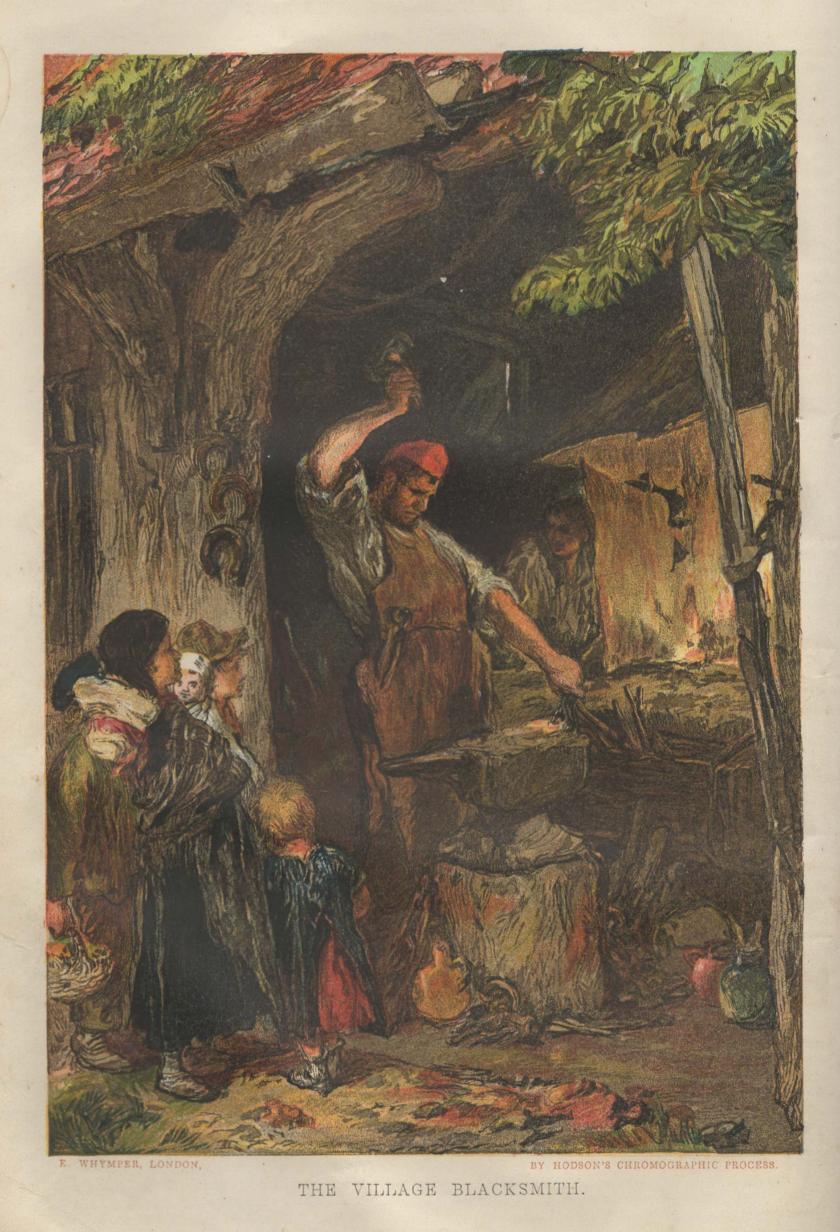
The Leisure Hour 1864, opposite p11
http://blacksmithscompany.org/
On blacksmiths: '...it is necessary to notice briefly the instruments that he employs. The first article that naturally occurs is the forge, without which his endeavours would be altogether fruitless. The great object in the construction of a forge, is to procure as great a quantity of heat at as small an expence as possible...The next object is to be able to furnish as powerful and steady a blast to the fire as possible...Smith's and Founder's bellows, whether single or double, are wrought by means of a rocker, with a string or chain fastened thereto. One of the boards is fixed so as not to play at all.
There are several kinds of heat given by the Smith to iron. The white heat, when it must be forged both into form and size - the blood heat, when it has acquited both, but needs to be smoothed and filed - and the welding heat, when two pieces are to be united.
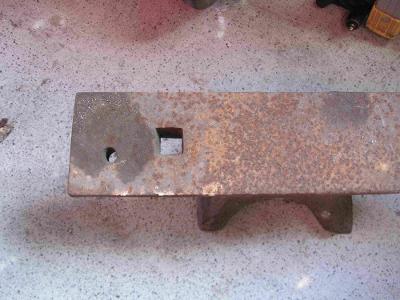
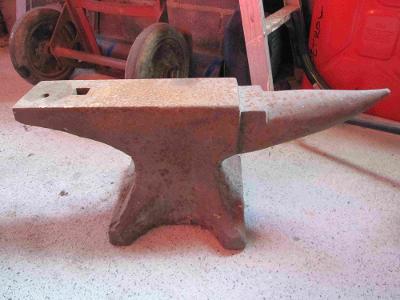
By means of the vice, which is fixed to the bench, the iron is held fast while he files or works it. Besides those which have been mentioned, he makes use of hammers, files, punches and pineers of various kinds.
A Journeyman Smith can earn from three to five shillings a-day.'
Artificiana, or a Key to the Principal Trades, Edinburgh, 1819,p71ff
My own photographs 2016
Right: A handmade nail, that would have been made by a blacksmith. This one was used in an Ashburton property circa 1909.
From my own collection
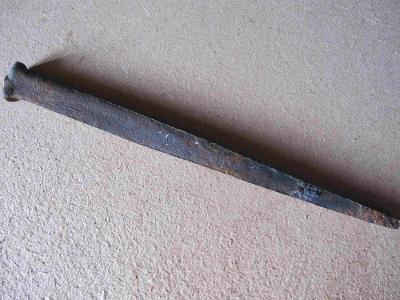
The definition of a white smith is usually given as a worker in tin or other light metals. However, according to Familysearch, whitesmiths worked an alloy of tin, antimony and copper which was introduced in 1769 as a rival to pewter. Originally called white metal, it was renamed Britannia Metal in 1797.
https://familysearch.org/wiki/en/England_Metal_Working_Occupations
According to Alison Hanham yre, ire, yer, yren etc all refer to iron.
Churchwardens' Accounts of Ashburton 1479 – 1580, Alison Hanham, Devon & Cornwall Record Society printed Devonshire Press 1970, p6
1634 John Ogier, blacksmith, is mentioned in connection with lands and meadows in Chewly Parke.
http://discovery.nationalarchives.gov.uk South West Heritage Trust, ref 48/14/68/2
http://discovery.nationalarchives.gov.uk South West Heritage Trust, ref 3419 A/PO9/1
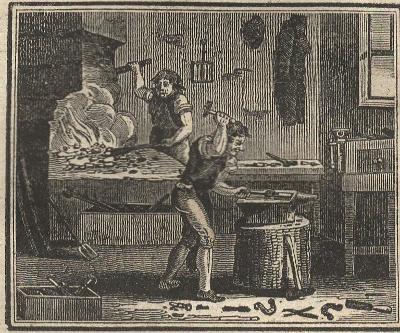
Artificiana, or a Key to the Principal Trades, Edinburgh, 1819,p70
John Horton, the 5 year old son of John Horton, whitesmith, died in January 1841
Western Times 23 January 1841 p2 col2
In the 1851 census 40 year old John Horton, a smith, is living in West Street with his wife Ann and their three daughters. All were born in Ashburton.
By 1871 John describes himself as a whitesmith, as is his 19 year old son Henry
1851 census HO107, piece no 1871, folio 313, p1
1871 census RG10, piece no 2080, folio 60, p32
***
John M Baker, aged 26, is a master blacksmith living in East Street.
James Balsden, aged 13, is a blacksmith living in St Lawrence's Lane.
James Butt, aged 40, is living in North Street. He is a shoeing blacksmith.
Jonas Campin, aged 34, is a blacksmith living in Roborough Lane.
George Campion, aged 47, is a blacksmith living at Water Farm.
George Crocker, aged 17, is an apprentice blacksmith in James Butt's household in North Street.
George French, aged 19, is an apprentice blacksmith in Samuel Jewell's household in St Lawrence's Lane.
Elisha Harvey, aged 15, is an apprentice blacksmith living in Storm Downe Cottage.
John Horton, aged 50, is a general smith living in West Street.
Samuel Jewell, aged 37, is a blacksmith living in St Lawrence's Lane.
William Leaman, aged 63, is a wheelwright and smith. His address is not given, but neighbours are in North St.
Edward Rice, aged 23, is a blacksmith living in Western Road.
Andrew Shamler, aged 36, is a blacksmith living in Roborough Lane.
Samuel Trenery, aged 51, is a blacksmith living in East Street.
Henry Veal, aged 46, is a blacksmith living in Browse's Buildings. Henry and his wife Rebecca were born in Cornwall, and two of their children were born in Ashburton. Their middle child, 9 year old Emily A, was born in Brazil.
Henry Veal, aged 12, is a blacksmith, the son of Henry Veal of Browse's buildings.
http://www.freecen.org.uk
*******
Jonas Campion, blacksmith, also gave evidence.
Western Daily Mercury, 14 November 1862, p4 col4
*******
In 1881 Annie French Horton, the daughter of Henry and Thirza, was baptised in October. Henry was a whitesmith.
3 days later James Thomas Waye was baptised. He was the son of James Waye, a blacksmith, and his wife Jedida.
Parish records
*******
1881 census RG11, pice no. 2161, folio 24, p4
By the time of the 1901 census, 52 year old Henry is a grocery store manager, living in North Street.
1901 census RG13, piece no. 2053, folio 40, p12
See Henry (as Veal) in the 1861 above.
*******
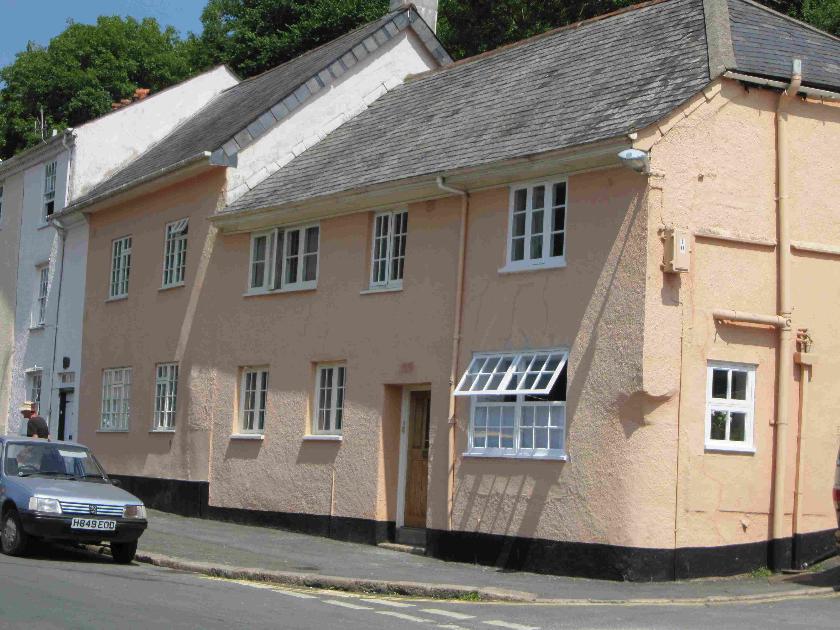
Above: No. 50 North St. Mr French's blacksmith shop was behind.
My own photograph c. 2013
On the 1881 census 39 year old George French, a blacksmith, was
living in North Street with his wife and children - amongst them James
French, born in 1872.
The family were close to the Culloden Inn, now demolished, which was on the opposite side of the street to what is now No.50.
https://www.familysearch.org/
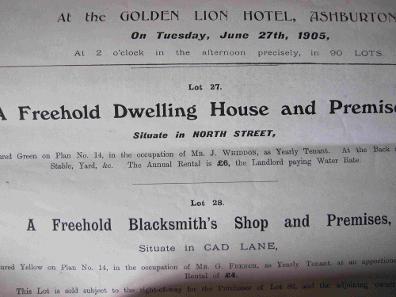
Left: Auction particulars for various premises being sold at the Golden Lion Hotel 27 June 1905
Below: Map accompanying auction (enlarged section on left). North St goes from top left corner to bottom right.
Many thanks to Jill Harrison for all the information re 50 North Street and surrounding premises.
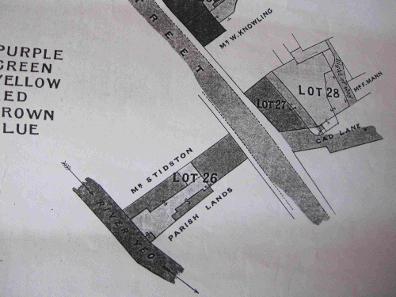
Above and right: Lot 28: A freehold blacksmith's shop and premises, situate in Cad Lane in occupancy of Mr G French, yearly tenant, annual rent of £4
Lot 27 is 50 North Street
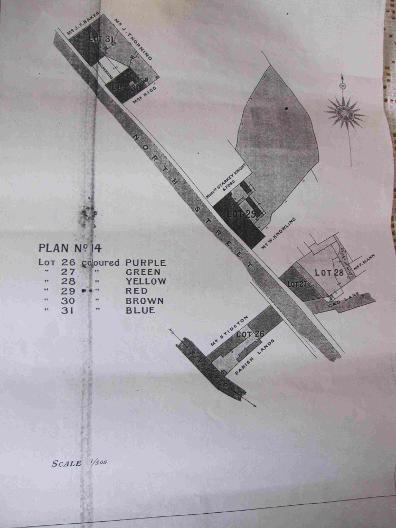
By 1911 James has followed in his father's footsteps, and is a blacksmith in St Lawrence Lane.
http://www.findmypast.co.uk/
In 1935 French and son are trading as shoeing smiths in St Lawrence Lane
Kelly's Directory 1935 p35
In the book 'Horsepower' Bill Tucker, born in 1887, describes his life as a blacksmith in Ashburton. Although not born in the town, he got on with most Ashburton people, describing them all as friendly – all except the other blacksmith - Mr French, of St Lawrence Lane. Even he came round in the end, after Bill knocked on his door and said that he was not trying to take his work away from him. Later, when Mr. French retired, Bill took over the premises.
Other residents mentioned by Bill:
Bill Eales, the saddler.
Mr and Mrs Harry Baskerville, at Penrae, East St (Bill Tucker lodged there)
Colonel and Mrs. Stucley
Horsepower, Dartington Rural Archive, publ Spindlewood, 1985, p70 foll.
'The
blacksmith provided interest for retired and unemployed men. They
watched the horses arrive and be tethered; patiently awaiting their turn
to be shod. The furnace would blaze and the smithy would extract a red
hot shoe and knock it into shape: the sound of the hammer on the anvil
resounded in the street. The heat from the fire and the singing of the
shoe being immersed in water, the smell as it was placed on the animal's
foot, are memories of a craft now the work of a mobile farrier. '
Thanks to Hazel Bray for the above account
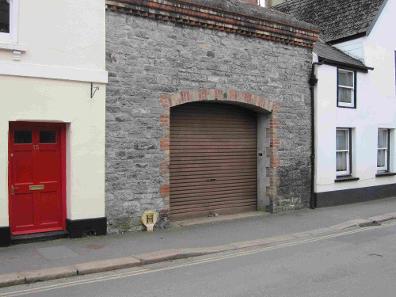
My own photograph circa 2013